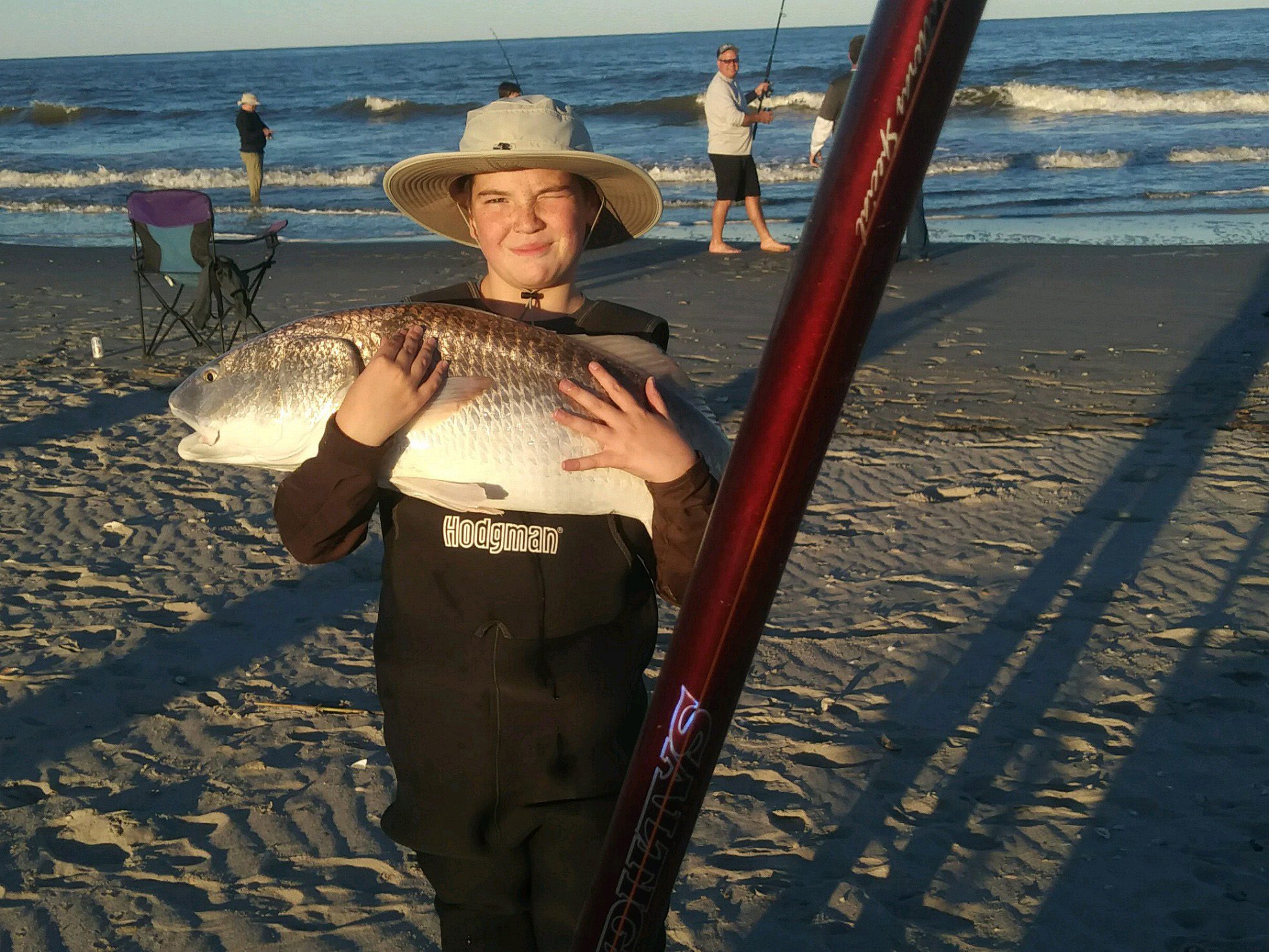Carolina Beach – December 13, 2018
Lewis, of Island Tackle and Hardware, reports that the speckled trout bite has been strong in marinas, creek mouths, and inlets. Also on the inside, a few red and black drum are being caught in the Cape Fear River.
Surf fishing is producing whiting, bluefish, a few puffers, both red and black drum, and speckled trout.
Christian, of Seahawk Inshore Fishing Charters, reports that red drum and trout will be the two main inshore species to look for this winter. Expect black drum to be mixed in, too.
The redfish will be gathered where they can find warmth in the winter. Finding muddy shallow flats will typically lead to finding schooling fish. You should also be able to find reds in the normal locations, such as deep creek bends and holes. Dead shrimp and artificial lures (such as Gulps) will do the trick. The lighter the weight the better, as long as you are fishing in areas without a strong current.
Trout will be holding in deep bends and creek mouths, and they will typically bite better on the warmer days in the winter. MirrOlures and soft plastics will work well, as will live mud minnows (if you can get your hands on them).
The black drum will be scattered and can mostly be found in the same holes as the reds. Dead shrimp will work best.

Hunter Larson (age 13) with a 30 lb. bull drum he beached from the surf at Fort Fisher.
Rod, of OnMyWay Fishing Charters, reports that there are a lot of bluefish chewing around the inlets and jetties, in addition to plenty of speckled trout and red drum. The creeks near the inlets are holding fish as well.
King mackerel have been anywhere from 22 miles on out to the Tower. If you can find the 68 degree water, you’ll find the fish. Look for a temperature break, and then focus on structure on the warm side of the break to produce bites. There have been plenty of false albacore and a couple of mahi around the Tower as well.
As the winter months take over, expect to travel farther for a shot at the kings, and take bottom tackle with you to make it a combo trip.
For now, black sea bass are biting within 10 miles, and while a lot of the catch has been comprised of throwbacks, there have been some respectable keepers mixed in. The bottom bite is also fantastic between 16-25 miles, where anglers are finding a lot of gag grouper and bigger black sea bass, in addition to grunts and a few beeliners and pink snapper. When you get to the 25-40 mile range, you’ll start to run into more scamps, red grouper, beeliners, triggers, and pink snapper. Frozen squid (especially squid wings) are producing on the black sea bass, while chunks of false albacore work for just about every species of bottom fish.
The Gulf Stream bite has been terrible, with only a few wahoo coming in between breaks in the weather. Get a good water shot before going to the Stream, and focus on temperature breaks to get into a pack of ‘hoos. Rock piles in 150’+ of water should be holding fish through the next few months.

Joey Moore with a 20″ trout that inhaled a Gulp shrimp while he was fishing near Snow’s Cut.
Jesse, of Ocean Stinger Fishing Charters, reports that the king mackerel bite has slowed down a little. With water temperatures in the mid 60s, most of the fish have moved to deeper water. The best place to look recently has been in the 15-25 mile range, where the water quality is much better. There are also more temperature breaks in this range, and they are always a good place to find a king. Fish locations like the Schoolhouse, 23 Mile Rock, or areas with good bottom structure that will hold bait. Drone spoons fished on #2 planers is the best overall tactic. Expect to catch false albacore while targeting the kings, and the albies will make for fantastic strip bait.
Bluefin tuna will pass through the area in January and February, where they will be parked off Frying Pan Shoals or feeding on the menhaden schools close to the beach. If you find the bait, you will find the fish, though the bite is also highly dependent on water and air temperatures.
January is also a great time to catch black sea bass anywhere in the 5-20 mile range.
The weather has finally cleared up enough to the make runs to the Stream, where there have been some fantastic temperature breaks in the 40-60 fathom range. Areas to the north have been the most productive for blackfin tuna and wahoo. Look for bottom structure, such as ledges and drop-offs. On either side of the high or low tide has been when the fishing is best.
Blackfins are biting pink UV squid teasers kept out of the prop wash and in the choppy water away from the boat. Planer rods below the prop wash have been bringing in the wahoo when rigged with small ballyhoo and blue/white Ilanders. Fathom skirt rigs with silver heads and white/pink/black skirts have been working great on flat lines run above the planers on the surface.
There have been good signs of bait and excellent water quality, so the Gulf Stream wahoo and tuna bite should remain strong all winter.
